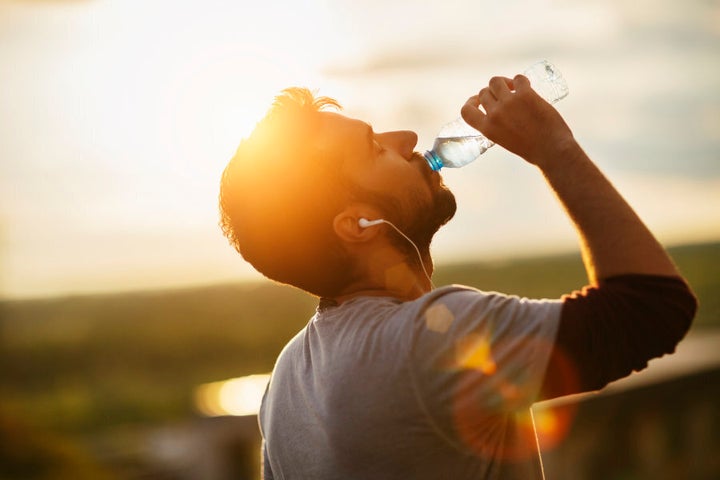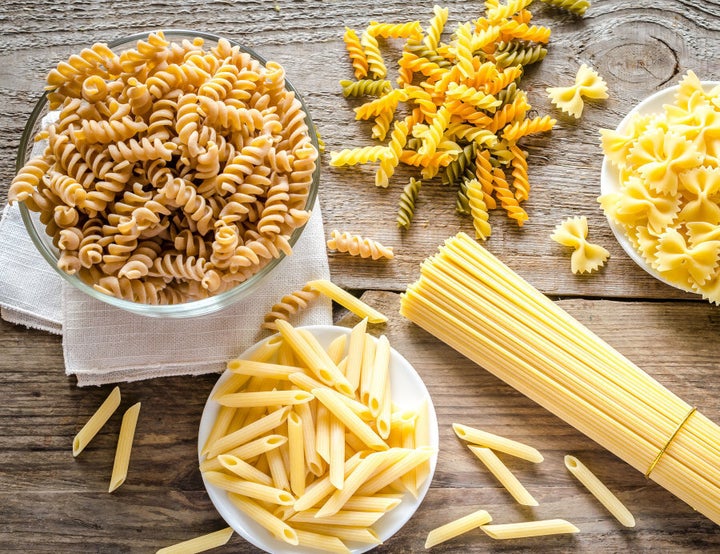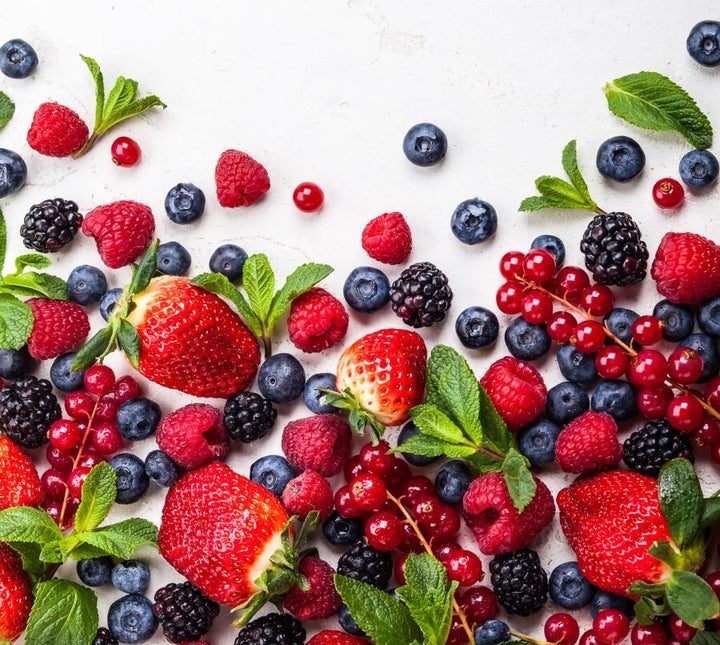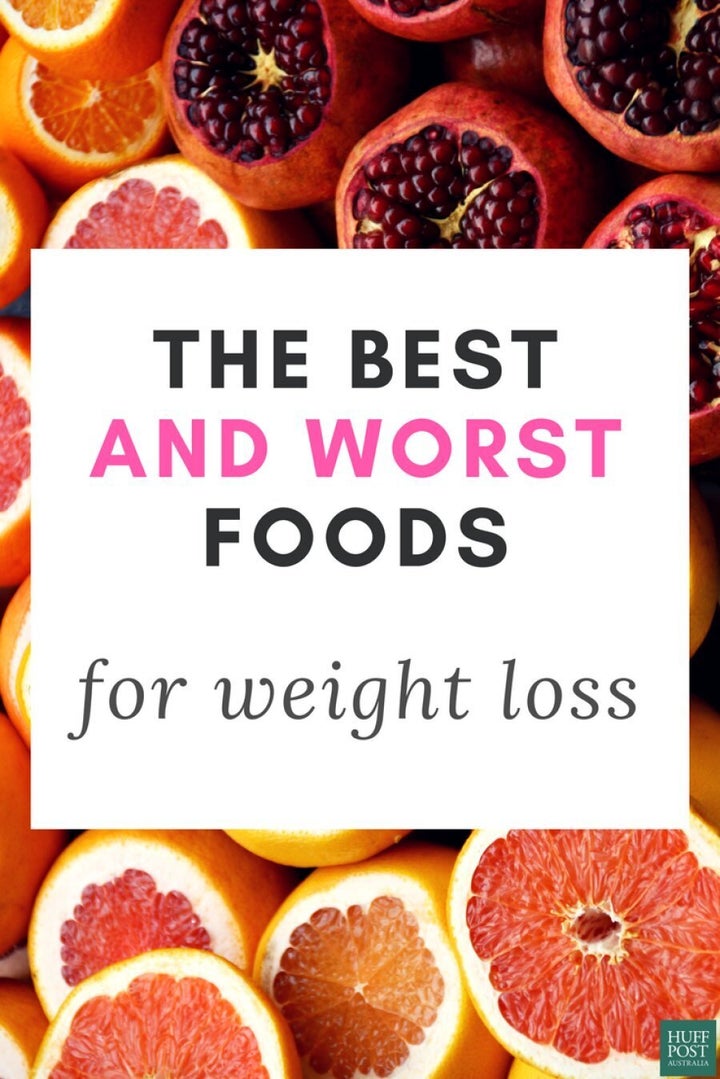If you embarked on a healthy eating and fitness regime at the start of the New Year, chances are that right about now, you're about to give up. (Or, you really, really want to.)
We're not trying to be pessimistic or negative -- stats actually show that the beginning of February marks the time where most people abandon their New Year's resolutions.
In a recent Freakonomics podcast episode, it was revealed that after everyone returns to the gym after New Year's there is "one day when people's bad habits catch up with their New Year's Resolutions, and that date is the first Thursday in February".
This "fall-off-the-wagon day" is when the "downturn in visits to the gym and the upswing in people going to fast food restaurants intersect".
So, what's the most logical and helpful answer? To help keep you inspired to stay on track.

Here are eight tips to follow right now, as well as the best and worst foods to eat for weight loss.
1. Plan ahead
"This is the secret to successful weight loss. If you fail to plan, prepare to fail," Alexandra Parker, accredited practising dietitian from The Biting Truth, told The Huffington Post Australia.
"Healthy eating takes planning -- it does not just happen by itself. By thinking ahead about meals and snacks you can spread a variety of healthy food across the day, keeping it interesting. Planning before you go shopping also helps avoid buying unnecessary junk food."
2. Learn how to read food labels
Food products are deliberately covered in buzzwords like 'natural', 'earth', 'organic' and 'gluten free' to encourage shoppers to blindly buy them before checking what's truly in the products. The best step you can do is learn how to understand food labels.
"Seek the help of an accredited practising dietitian and learn smart tips on what to look for on the nutrition information panel when purchasing packaged foods," Parker said.

3. Keep your own cooking balanced
"This is important because often when we're eating out at a restaurant or a friends place we have limited control over the meal," accredited practising dietitian from The Biting Truth Anna Debenham told HuffPost Australia.
"When you're cooking for yourself, choose lean sources of protein, good quality carbohydrates and bulk out your meals with lots of vegetables."
4. Eat more mindfully (and watch your portions)
We all know how it feels after we eat a meal in a rush or when we're distracted -- we can feel bloated, uncomfortable and gassy, not to mention we eat far more food.
"Turn off distractions (TV, phone, emails) and savour food," Debenham said. "And watch your portions."
5. Avoid quick fixes or 'all or nothing' thinking
"We can all go on a really strict diet for 2-3 weeks, but what happens after that? Any time you're considering a diet it's important to think to yourself, 'Can I see myself adopting this approach long term?'" Debenham said.
"All or nothing thinking can be detrimental in the long run," Parker added. "Instead of depriving yourself of foods you love, learn how to eat in moderation and incorporate these foods into your diet in a healthy, balanced way."

6. Make sure you're eating enough
Have you hit a weight loss plateau? Don't worry, it's totally normal and there are many reasons this occurs, one being not eating enough.
Parker urges everyone to not give up when you plateau and to make sure you're eating enough to fuel your workouts.
"Eating too little is not sustainable and not healthy for your body either," Parker explained. "When losing weight, you want to aim to lose fat, not protein. For long-term weight loss, the focus needs to be shifted away from restricting and towards eating healthy foods."
7. Don't eliminate entire food groups
"When people are trying to lose weight, they often cut out an entire food groups. This usually just results in an unbalanced diet and can leave you deficient in certain nutrients," Debenham said.
"This is also not a sustainable nor enjoyable way of eating and is most likely not going to work in the long run."
The main foods that often get cut out are grains and fruit, but they're actually helpful in losing weight when eaten in appropriate amounts.

"Eliminating grains is a huge trend we've seen all over social media. The key is to understand that all grains cannot be bunked under the same heading," Debenham said.
"The body deals with refined and unrefined grains in very different ways. Refined grains (or high GI foods) like white bread, soft drinks, processed foods, for example, break down very quickly into sugar inside the body, causing a spike in blood sugar levels followed by a quick drop in sugar levels.
"This quick rise and fall stimulates hunger and leaves us feeling unsatisfied. It can also affect our ability to concentrate and our moods.
"Unrefined grains (or low GI foods), on the other hand, break down much more slowly in the body and provide us with longer lasting energy. These are foods like whole grain breads and cereals, fruits, vegetables and dairy."
That's right, according to Parker, fruit isn't the devil either.

"We often see people cutting out certain fruits because they think they contain too much sugar," Parker said.
"It's essential to understand that while fruits do contain some naturally occurring sugars, they also contain fibre which influences the ways these sugars are absorbed. They also contain other important vitamins and minerals that your bodies require."
8. Avoid 'detox diets'
"Our bodies do not actually need to be 'detoxed' as they already do a very good job of this naturally, mainly through the actions of the liver, kidneys, lungs and gastrointestinal tract," Parker said.
"These organs help to remove any harmful substances that should not be in the body, meaning the body is always in a natural state of cleaning itself. Detox diets can more often do more harm than good."
Here are the best and worst foods for weight loss.

The best foods for losing weight
- Dark leafy greens -- broccoli, broccolini, spinach, kale, Swiss chard, rocket, dark green lettuce, watercress
- Non-starchy vegetables -- capsicum, artichoke, asparagus, beans and bean sprouts, beetroot, Brussels sprouts, dark leafy greens, carrot, cauliflower, celery, cucumber, eggplant, mushrooms, onion, zucchini, tomato
- Fruit -- berries, banana, avocado, apple, kiwi fruit, citrus, melons, etc.
- Whole grains -- brown, red and wild rice, wholewheat bread, pasta and crackers, barley, buckwheat, bulgur (cracked wheat), quinoa, millet, rolled oats, popcorn
- Legumes and beans -- chickpeas, lentils, kidney beans, butter beans, black beans, soy beans, tofu
- Lean meat -- chicken, lean beef, fish, seafood, eggs, tofu, nuts, seeds, legumes
"Following serves from the five food groups and avoiding discretionary foods will help most people lose weight while staying healthy," Parker said.
"Consider it like this: each day we have an energy budget that we can spend on foods. We want to choose foods that are lower in energy but richer in nutrients, such as fruits and vegetables, reduced fat dairy, whole grains and cereals."
If we spend our energy budget on these healthy foods we will get more bang for our buck compared to energy dense foods like processed foods, fried foods, pastries and confectionery.
"Foods that are high in fibre assist with weight loss as they help you to feel full after a meal and also promote regular bowel movements," Debenham said. "High fibre foods include whole grain bread, brown rice, fruits, vegetables, oats and whole grain pasta."
"Balancing each meal with half a plate of vegetables or salad will help keep you feeling satisfied after the meal without contributing many kilojoules," Parker said.
"You can count most green vegetables as 'free' foods because they contribute very little energy to your diet."
The worst foods for losing weight
- Sweet treats -- sweet biscuits, cakes, desserts, pastries, ice cream, confectionery, chocolate, chocolate bars
- Sugary drinks -- soft drinks, diet soft drinks, sports drinks, fruit juice
- High calorie, greasy meals -- burgers, pies, pizza, kebabs, takeaway food, chips
- Packaged snack foods -- sugary muesli bars, potato chips, corn chips
- Processed meats -- salami, bacon, sausages, chorizo, ham, hot dogs
"These tend to be high in saturated fats, added sugars, added salt and high in kilojoules (energy)," Parker told HuffPost Australia.
"Foods that are high in energy are going to blow your energy budget and make it difficult to lose weight. If the energy you're putting into your body is more than the energy you are expending (for example, in the form of physical activity) then you'll find it very hard to lose weight."
ALSO ON HUFFPOST AUSTRALIA